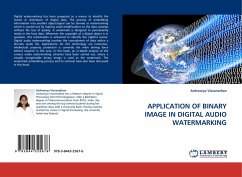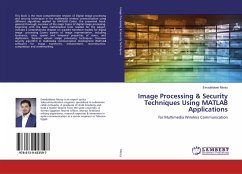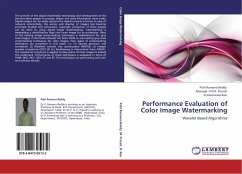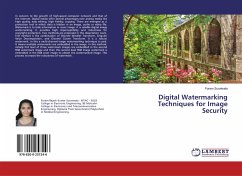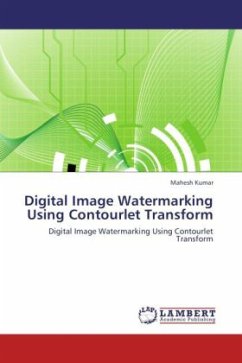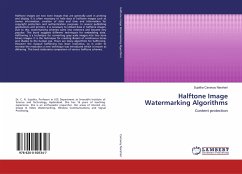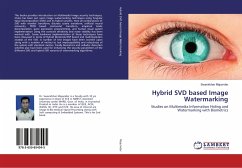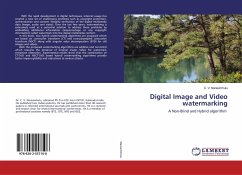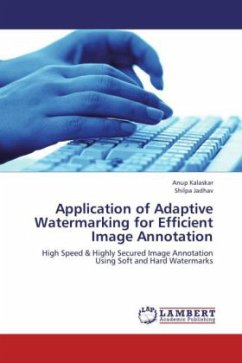
Application of Adaptive Watermarking for Efficient Image Annotation
High Speed & Highly Secured Image Annotation Using Soft and Hard Watermarks
Versandkostenfrei!
Versandfertig in 6-10 Tagen
32,99 €
inkl. MwSt.

PAYBACK Punkte
16 °P sammeln!
Digital watermarking is a technique which allows an individual to add hidden copyright notices or other verification messages to digital audio, video, or image signals and documents. Such hidden message is a group of bits describing information pertaining to the signal or to the author of the signal (name, place, etc.). The technique takes its name from watermarking of paper or money as a security measure.The objective is to embed 32 bits of metadata into a single image, Our scheme hides the data in spatial domain. This method takes an image le and 32-bit Meta data and produces a new image le ...
Digital watermarking is a technique which allows an individual to add hidden copyright notices or other verification messages to digital audio, video, or image signals and documents. Such hidden message is a group of bits describing information pertaining to the signal or to the author of the signal (name, place, etc.). The technique takes its name from watermarking of paper or money as a security measure.The objective is to embed 32 bits of metadata into a single image, Our scheme hides the data in spatial domain. This method takes an image le and 32-bit Meta data and produces a new image le that contains the 32-bit Meta data. The output image is called Annotated image le and it is similar to the input image le. Adaptive Watermark technique identity parts of the image that are most suited for data hiding. The model is built by embedding two basic watermarks: a pilot watermark that locate the existence of the watermark and an information watermark that carries a payload of several dozen bits.



